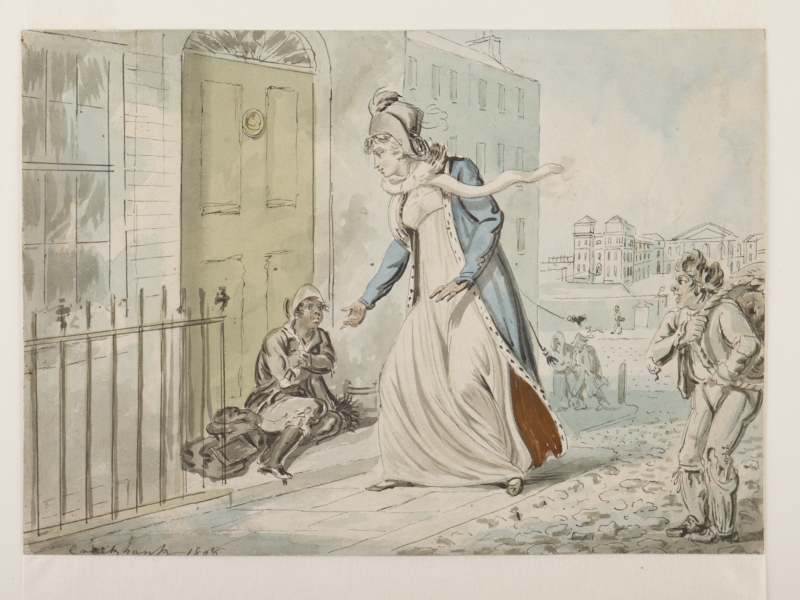The caricaturist and portrait painter Isaac Robert Cruikshank (known more commonly after 1811 as Robert Cruikshank) was the son of the caricaturist and painter, Isaac Cruikshank and the elder brother of George Cruikshank. He was trained in drawing, watercolour and etching by his father and specialised in illustrating London subjects.
After a brief stint as a midshipman in the East India Company, Robert returned to London in 1806 and began assisting his father and brother in the studio. His earliest work was collaborative, and the first work identified to be by him alone was made in 1809. It is thought that he may have spent the next few years attempting to establish himself as a painter of portrait miniatures, but in 1818-19 he began devoting himself to caricatures. His specialism until the mid-1820s was lampooning dandies.
He made satires of George IV and the Queen Caroline affair. With his brother George he illustrated Pierce Egan's best-selling 'Life in London' (1820-21), before working with C.M. Westmacott in imitation of Egan's and his brother's productions. In the later 1820s he illustrated a number of books, often as sequels to publications his brother had worked on. Together they collaborated on London Characters (1827), and Robert worked alone on George Smeeton's Doings in London (1828) and Egan's Finish to the Adventures of Tom, Jerry and Logic. His series of his wood-engravings for a number of short books were collected and reprinted as Facetiae (2 vols, 1831). He continued to design plates on antiquarian and theatrical subjects into the 1840s, but was less prolific in this period as his behaviour became more erratic and his finances declined. He caught bronchitis in the winter of 1856 and died in March.








